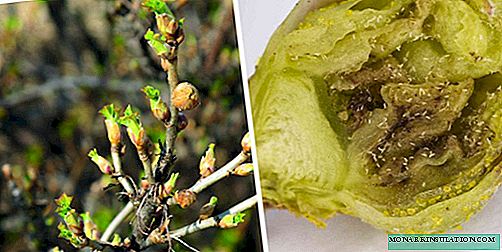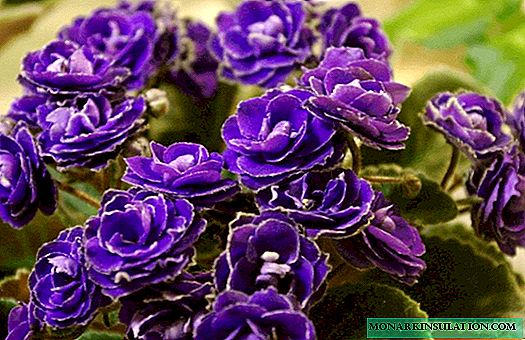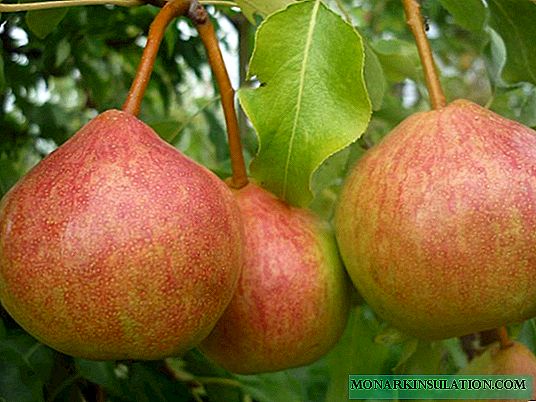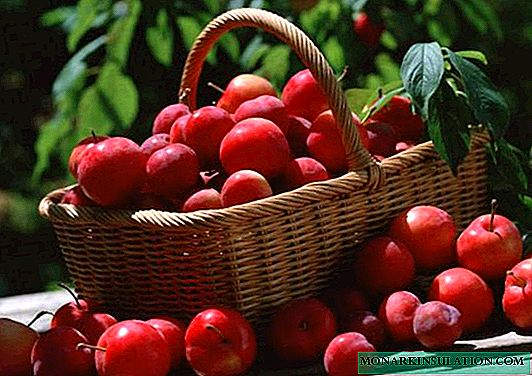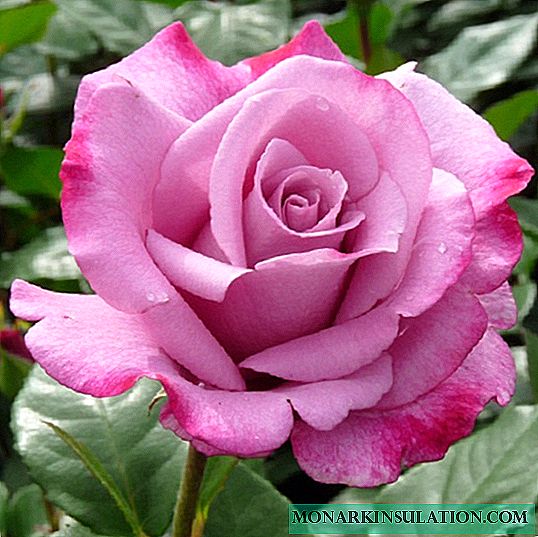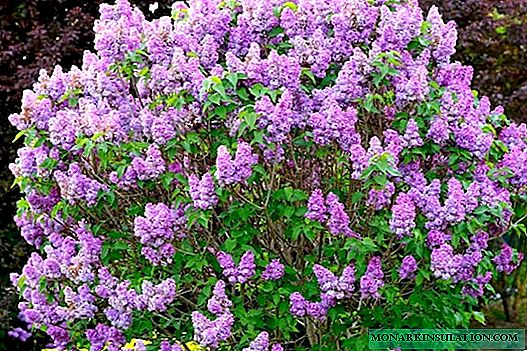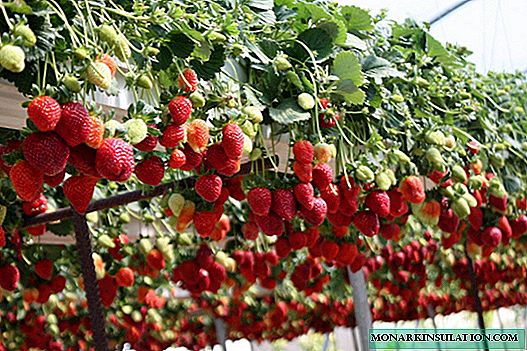
Recently, unusual methods of growing vegetable and berry crops, including strawberries, have become increasingly popular. For the organization of original plantations, car tires, barrels, boxes, plastic bags and other improvised material are used. An interesting method of growing garden strawberries in PVC pipes.
Features of growing strawberries in PVC pipes
The method of growing strawberries using PVC pipes has its advantages and disadvantages. The advantages of this method are as follows:
- Significant savings in space on the plot.
- Design mobility. If necessary, it is easy to move or rebuild.
- Harvest cleanliness. The berries do not come in contact with the ground, therefore they are less prone to decay, loss of presentation.
- Lack of weeding. Strawberry planting practically does not need it.
- Convenient watering and top dressing of plants.
- Protection against diseases and pests. If the soil is properly prepared and processed, then there are no larvae of pests, pathogenic bacteria in it.
- Originality. The ridges will be the highlight of your site, give it a well-groomed appearance.

Planting strawberries in pipes saves the footprint and perfectly decorates the site
This method has some disadvantages:
- Planting strawberries in pipes should be regularly (at least once every 3-5 days) watered. The presence of an automatic irrigation installation or filling the irrigation pipe with hydrogel filled with water, which will gradually give moisture to the roots of plants, will greatly facilitate this task.
- Soil in PVC pipes has practically no opportunities for natural enrichment, so plants need regular and frequent feeding.
- Plants planted by this method do not tolerate frosts well, therefore, in the northern regions and in the middle lane there is a threat of freezing. In this case, you can use the mobility of the structure: vertically placed pipes are moved to a horizontal position, cover them. It must be borne in mind that at the same time, plants that are on the underside of the garden can suffer.
Pipe construction
Vertical or horizontal design without special costs and effort can be made independently.
Necessary materials
To make ridges from PVC pipes you will need:
- Two pipes: wide and narrow. It is not necessary to specifically purchase them; you can use those that remain after repair.
- Plugs, plugs.
- A device for drilling holes of various diameters.
- Parts for fasteners.
- String or twine.
- A piece of nonwoven fabric.
- Knife.
- Adhesive tape or tape.
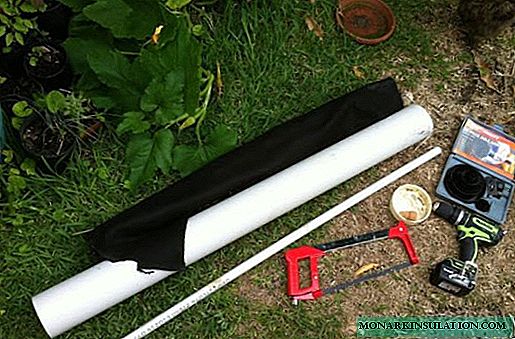
To make a construction of PVC pipes, you need to prepare the necessary tools and materials
Pipe preparation for vertical construction
Creating a vertical structure for growing strawberries consists of the following steps:
- Determining the height of the structure, they are guided by the maximum convenience when placing and leaving it. Usually they stop at a size of 1.5-2 m. A larger pipe is cut along the selected length, and a narrower pipe, which will serve for irrigation, is made 10-15 cm longer.
- Frequent small holes are drilled in a narrow pipe. About 20 cm of the lower part is left intact. Such an arrangement will prevent waterlogging of the lower soil layers.
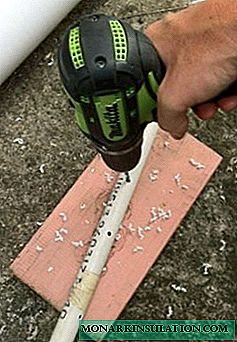
In a narrow pipe, which will serve as a watering, you need to drill frequent small holes
- Wrap the irrigation pipe with any non-woven material and securely fix it along the entire length. If this is not done, then the fabric may shift down and open the upper plums. In the absence of a protective layer, the growing roots, the soil mixture will clog holes and make it difficult to water and fertilize plants.
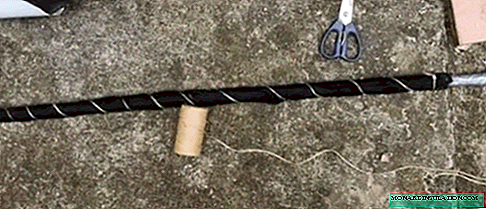
Watering pipe must be wrapped in burlap, spanbond and securely fasten the material along the entire length
- The bottom drain of the irrigation pipe is closed with a stopper.
- In a wide pipe with a drill at a distance of 25-30 cm from each other, drill holes with a diameter of about 10-12 cm for planting strawberry seedlings. You can arrange them in a checkerboard pattern or on the planned sunny side.

In a pipe of a larger diameter, drill holes for planting strawberries
- At the bottom of a wide pipe put a cap.
Pipe preparation for horizontal construction
When preparing pipes for horizontally spaced ridges, you need to pay attention to some features and differences from vertical structures:
- Plugs are used on both sides of a wide pipe. In the absence of standard plugs, they can be made independently using a durable plastic film. The ends of the pipe are wrapped around it, carefully secured around the edges with twine or electrical tape.
- Landing holes are not made around the perimeter of the pipe, but in one or two lines.
- You can use a pump to supply water. But a more affordable way is to water by gravity. To do this, the water tank is fixed slightly above the irrigation pipe, ensuring its connection with the structure.

When watering by gravity, the water tank must be fixed above the irrigation pipe
Video: making a pipe for a horizontal bed
Installation of the structure and filling it with soil mixture
It is very important to choose the right soil composition and correctly fill the pipes with soil. Backfill requires a drainage layer and fertile soil. Expanded clay, pebbles can be used as drainage. In a vertical installation, the irrigation pipe is inserted inside the main one, fixing it in the center. This arrangement will provide a uniform flow of moisture to all planted plants. A drainage layer is poured into the wide pipe, which should reach the lower holes of the narrow pipe. This not only prevents waterlogging of the soil, but also gives the structure additional stability.

Inside the wide pipe, first you need to insert the irrigation pipe, then pour the drainage layer and fill it with earth to the top
With horizontal placement, drainage is poured through each landing hole and leveled on the bottom of the pipe with an even layer of 2-3 cm. An irrigation pipe is placed on the drainage layer. Then the structure is filled with soil. It should be:
- fertile;
- easy;
- permeable;
- with little acidity;
- disinfected.
The best basic basis of such soil will be humus (obtained by the decomposition of organic matter) or sod land. To destroy the larvae of harmful insects, as well as fungal and other infections located in the ground, it must be decontaminated. The soil can be shed with boiling water, and then dried or treated with microbiological preparations (Fitosporin, Trichodermin, Alirin B, Baikal EM-1 according to the instructions). Peat and small sawdust of hardwood in equal proportions are added to the prepared soil for planting strawberries.
Backfilling is a lengthy procedure that requires accuracy and patience. The soil is filled up in small portions, carefully compacted, leveled, periodically spilled abundantly with water. If the earth is not poured loose, then after some time due to air congestion it will settle, voids will form in the pipes, and this will negatively affect the yield of berries.

The wide landing pipe must be tight, filled with soil without air plugs
In the ground, you can add crushed polystyrene. Its balls will not allow the soil to be compacted and will provide free access to air.
Video: finished pipe for a vertical bed
Video: crop on a vertical bed
How and where to place pipe structures
Such beds can be placed vertically or horizontally. The advantages of vertical layout:
- space saving (per 1 m2 several dozen bushes are placed);
- saving water, fertilizers and pest drugs;
- ensuring maximum illumination for all berry bushes;
- convenience of harvesting;
- originality of the appearance of facades, balconies, adjacent area.

Vertically arranged strawberry beds serve as the original decor of the site
Horizontal beds with planted strawberries are also an effective way to grow crops and decorate the site. They can be hung in a greenhouse, on a fence, installed in an isolated area by placing pipes in several tiers.

Suspended or ground-mounted shelving can be used as a support for horizontal beds.
Features of growing strawberries
Strawberry care methods on vertical and horizontal ridges from pipes practically do not differ from agricultural techniques of traditional crop cultivation. They consist in watering, fertilizing and combating pests and diseases, and strawberries planted in this way practically do not need to be weeded.
Grade selection
When choosing strawberries for growing in pipes, you should focus on varieties with long fruiting periods. These can be repair varieties:
- Albion;
- Queen Elizabeth II;
- Moscow delicacy;
- Evie 2;
- Diamond;
- Temptation.
They are attractive with the following features:
- early ripening of berries;
- resistance to diseases and pests;
- repeated fruiting in late summer;
- a crop of annual landings.
Ampel strawberry varieties are perfect for growing in pipes. This is a type of remontant garden strawberry, characterized by a long mustache. Young rosettes are able to form berries even without rooting. In addition to high productivity, these varieties are distinguished by excellent decorative properties. Planting is a cascade of leaves and shoots, which are strewn with bright berries and delicate inflorescences.

Ampel strawberry rosettes can form berries even without rooting
Planting seedlings
Strawberry seedlings can be planted in the process of filling the pipes with earth or at the end, when the structure is fully assembled, fixed and watered. For planting, healthy strawberry seedlings are selected, the roots of which are recommended to be dipped in a mash from equal parts of clay and manure. This treatment will help the plant retain moisture better. A vertical depression is made in the soil, where the roots are placed, making sure that they do not bend. The root neck of the seedling is located at ground level.

Strawberry seedlings are planted in the planting holes so that the root collar is at ground level
Between strawberry seedlings (with a vertical planting - at the bottom of the structure), it is recommended to plant marigolds that can repel harmful insects.
Planting seedlings can not be made in every planting hole. Such an arrangement will make it possible to root the emerging young shoots, to renew and rejuvenate strawberry plantings.
Watering
You need to water the crop often, as the soil in the pipes dries quickly. Determine the need for moisture according to the condition of the soil in the landing holes. Watering is done through a narrow pipe, which should first be filled to the top with water (when placed vertically), and then gradually give moisture to the plants.
Overmoistening should be avoided. It leads to the spread of fungal infections.
Top dressing
Feeding strawberries planted in pipes has differences from fertilizing plants grown in the usual way:
- The soil in the pipes is quickly depleted, so plants need frequent and effective top dressing. They must be carried out at least 1 time per week.
- On beds of PVC pipes, liquid top dressing is preferred, which must be combined with watering. The nutrient solution is poured into the irrigation pipe and through it gets to the roots of the plants. For the preparation of liquid top dressing, you can use complex fertilizers or dilute organic matter with water (recommended proportion 1:10).
Pest and Disease Control
Strawberries planted in PVC pipes can be attacked by such pests:
- Colorado beetle,
- weevil,
- whitefly
- strawberry mite
- slugs
- snails.
Adequate illumination and moderate watering will prevent the spread of snails, slugs and millipedes. If the named pests have spread en masse, then plantings need to be treated with Metaldehyde (according to the instructions). A solution of Karbofos (50 g per bucket of water) will help to cope with strawberry mites, weevils and whiteflies. Processing with these drugs is best done after harvest.
When attacking strawberries with a Colorado potato beetle and May larvae larvae, chemical preparations are not recommended, since they all have a long duration and are unacceptable for rapidly ripening berries. These pests must be collected manually.
Growing strawberries in PVC pipes is not only a simple and economical, but quite practical way to get a good harvest. A garden plot will surprise with its originality and originality.







